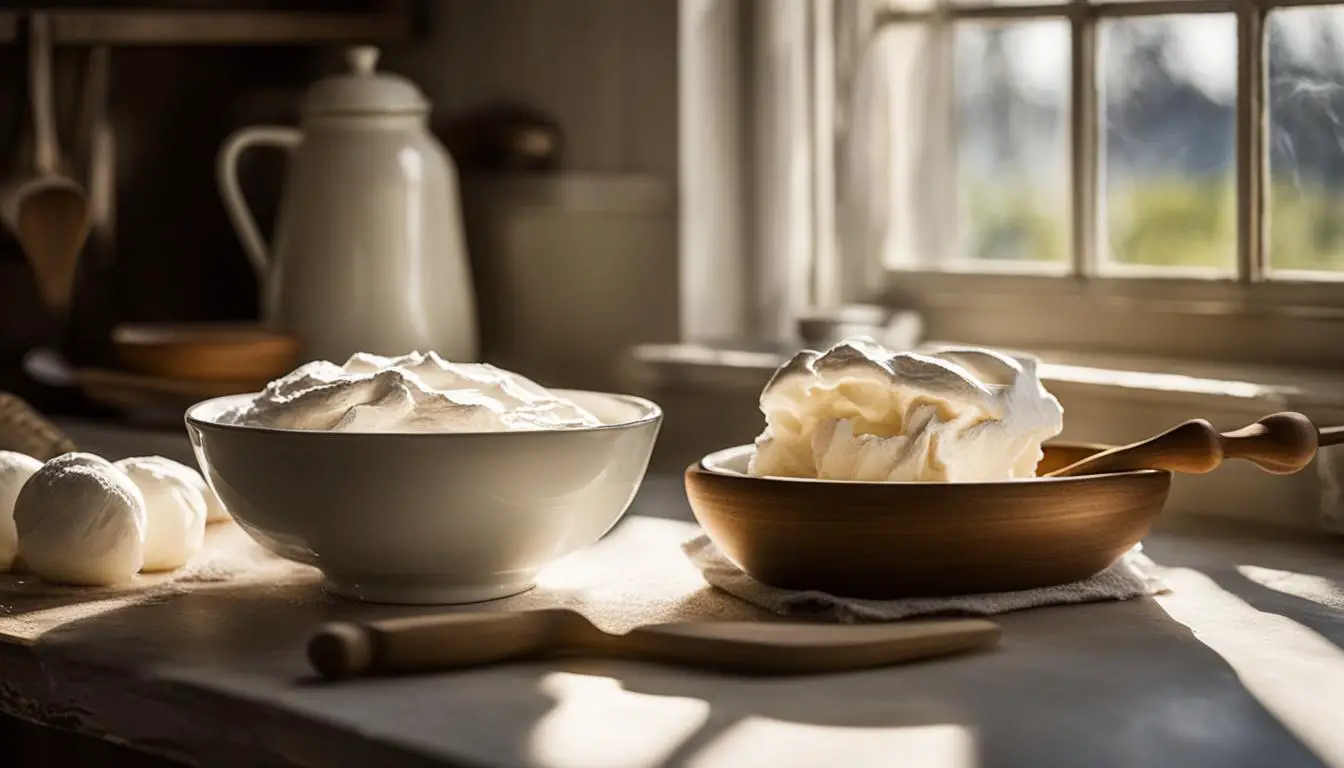Cream of tartar is not just your average baking ingredient. It is the secret recipe enhancer that can take your culinary creations to the next level. Whether you’re baking cookies, cakes, or pastries, cream of tartar has unique benefits that make it an essential ingredient in your kitchen.
Contents
- 1 The Chemistry of Cream of Tartar in Baking
- 2 Cream of Tartar in History
- 3 The Unique Benefits of Cream of Tartar
- 4 Cream of Tartar and Its Culinary Chemistry
- 5 Cream of Tartar as a Kitchen Staple
- 6 Finding Cream of Tartar and Storage Tips
- 7 The Versatility of Cream of Tartar in Recipes
- 8 Conclusion
- 9 FAQ
- 9.1 What does cream of tartar do for a recipe?
- 9.2 What are the uses of cream of tartar in recipes?
- 9.3 Are there any substitutes for cream of tartar?
- 9.4 What are the effects of cream of tartar in recipes?
- 9.5 What is the role of cream of tartar in baking?
- 9.6 Where can I find cream of tartar and how should I store it?
- 10 Source Links
Key Takeaways:
- Cream of tartar is a recipe enhancer used in baking.
- It has unique benefits such as immediate activation and discouraging browning.
- Cream of tartar can be found in the baking aisle of most grocery stores.
- It is versatile and can be used in a wide range of recipes.
- Discover the secrets of cream of tartar and elevate your baking skills.
The Chemistry of Cream of Tartar in Baking
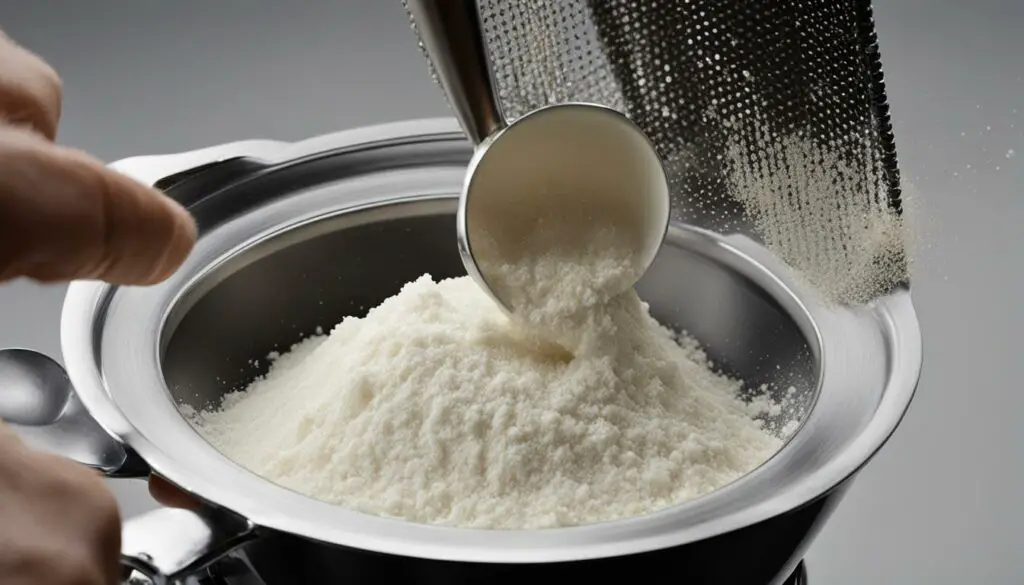
Cream of tartar, a commonly used ingredient in baking, plays an essential role in the chemistry of creating light and fluffy baked goods. It acts as a chemical leavener, working in tandem with a base, such as baking soda, to produce a foaming and fizzing effect. This reaction is what gives baking powder its leavening power.
When cream of tartar combines with a base and a stabilizer like cornstarch, it creates a unique chemical reaction in the batter. This reaction releases carbon dioxide gas, which becomes trapped in the dough or batter. As a result, the baked goods rise, creating a light and airy texture.
The use of cream of tartar as a chemical leavener provides bakers with precise control over the rising process, allowing them to achieve the desired texture and structure in their baked goods. It also opens up new possibilities for creating unique forms and textures, such as fluffy cakes, tender cookies, and delicate pastries.
By understanding the chemistry behind cream of tartar and its interaction with other ingredients, bakers can unlock the secrets to creating perfectly risen and delicious baked goods.
Cream of Tartar in History
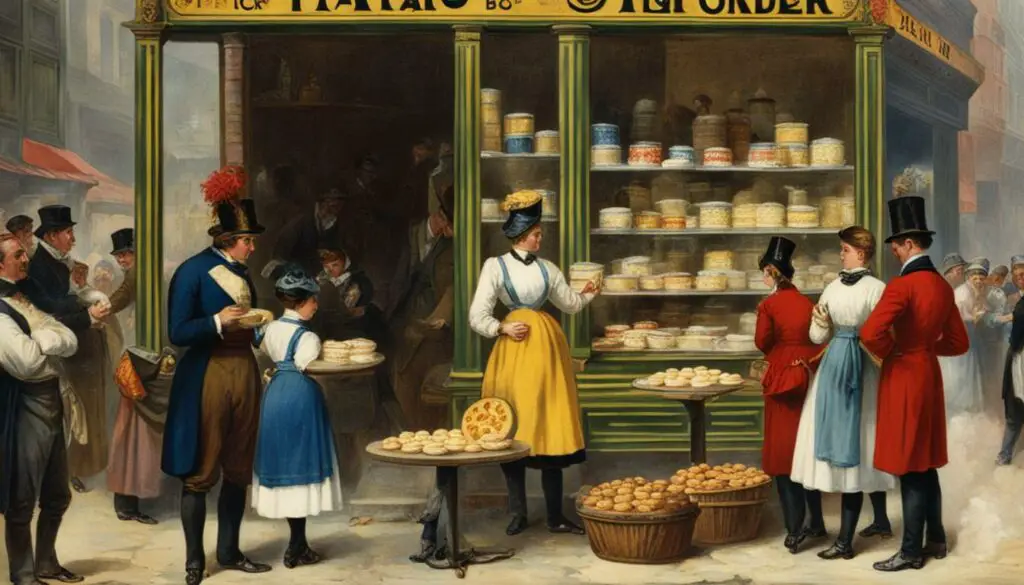
Cream of tartar has a rich history in American baking. In the past, cakes were made using traditional methods that required time-consuming waiting for yeast to rise. Cream of tartar, along with other chemical leaveners, revolutionized baking by providing a faster and more foolproof alternative. It allowed American women to experiment in their kitchens and invent new cake recipes that were pleasurable and creative. While commercially available baking powders may no longer include cream of tartar, it still holds its unique benefits in baking.
“Cream of tartar changed the game for bakers back in the day. It offered a shortcut that allowed us to create beautiful cakes without the long wait for yeast to work its magic. It was a true innovation that sparked the baking powder wars and paved the way for American baking as we know it today.” – Martha Stewart, legendary baker and culinary expert
The Unique Benefits of Cream of Tartar
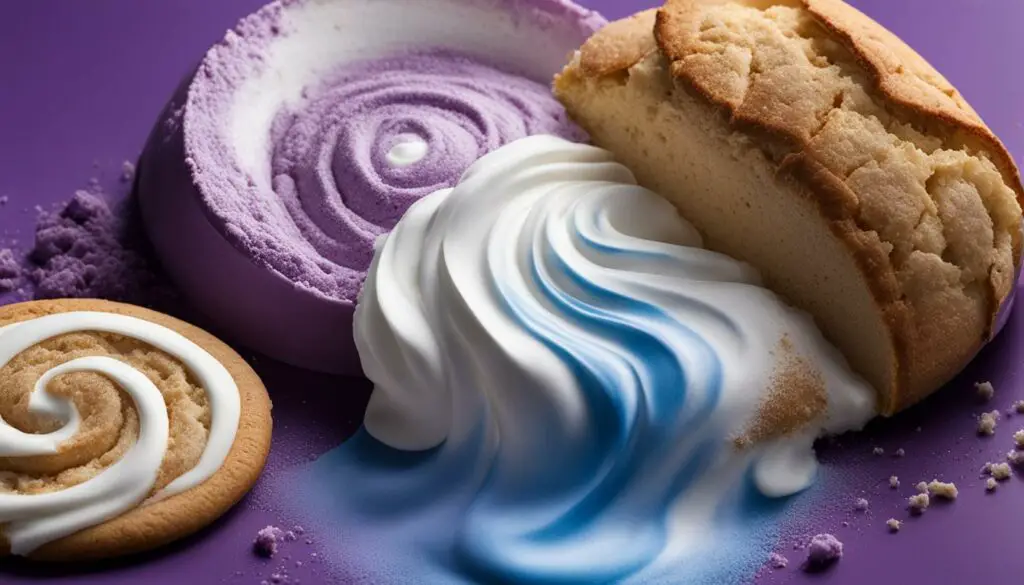
Cream of tartar offers several unique benefits in recipes. It activates immediately upon contact with moisture in a batter, making it an efficient ingredient. It also discourages browning, keeping the insides of baked goods snowy and light. Unlike many other chemical leaveners, it does not leave a metallic aftertaste, ensuring the flavors of your recipes are not compromised.
When added to recipes, cream of tartar provides immediate activation, allowing for quicker and more consistent results. As soon as it comes into contact with the liquid components of a batter, it triggers a reaction that helps your baked goods rise. This eliminates the need for prolonged waiting times and gives you more control over the baking process.
In addition to its immediate activation, cream of tartar also offers another valuable benefit—it discourages browning. When baking sweet treats like meringues or delicate pastries, maintaining a light color is essential to their visual appeal. Cream of tartar helps keep the insides of these baked goods snowy white, creating an inviting and appetizing appearance.
What sets cream of tartar apart from other chemical leaveners is its lack of a metallic aftertaste. Some leavening agents, like baking soda, can leave a distinct and unpleasant taste in your recipes. Cream of tartar, on the other hand, allows the natural flavors of your ingredients to shine through without any unwanted metallic notes.
Overall, cream of tartar offers a triple threat of benefits—it activates immediately, discourages browning, and leaves your recipes free from any metallic aftertaste. With these distinct advantages, it’s no wonder that cream of tartar is a beloved ingredient among bakers and cooks alike.
“Cream of tartar’s ability to activate immediately, discourage browning, and avoid a metallic aftertaste make it an indispensable ingredient in the kitchen.”
Cream of Tartar and Its Culinary Chemistry
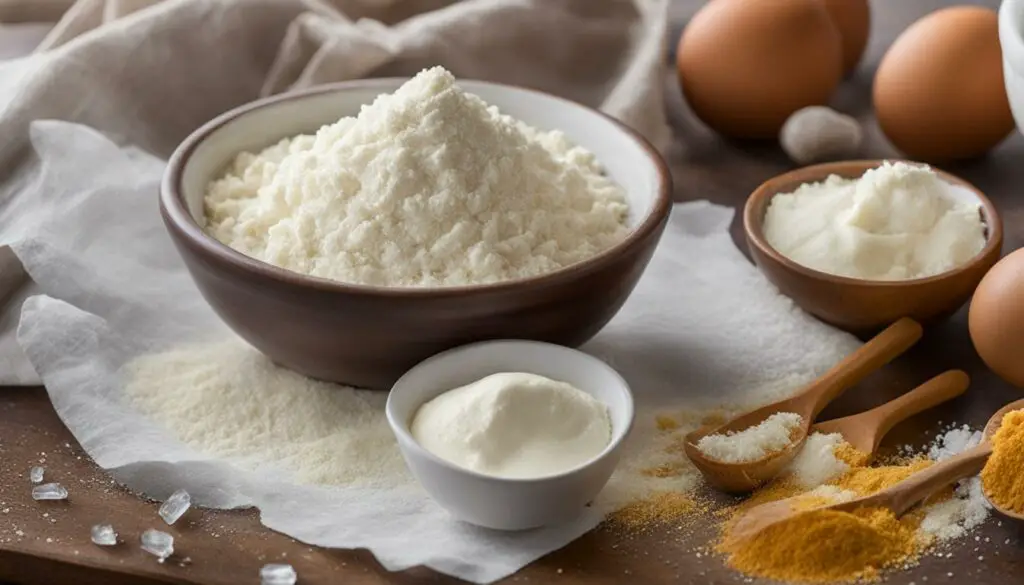
In the world of cooking and baking, cream of tartar takes on a chemical role that goes beyond its culinary reputation. Chemically known as potassium bitartrate or potassium hydrogen tartrate, cream of tartar is a salt derived from tartaric acid. What sets it apart is its unique properties and versatility in various recipes.
Cream of tartar is formed as a byproduct during the winemaking process and occurs naturally as crystal-like formations. To obtain cream of tartar, wine lees are treated with hot water, and the resulting crystals are purified. This culinary chemistry marvel acts as a stabilizer and helps increase the volume of whipped egg whites, making it an essential ingredient in recipes like angel food cake and meringue. Its ability to hold air and give structure to delicate desserts makes it an indispensable tool in the hands of bakers.
But cream of tartar’s utility doesn’t stop there. It offers a range of benefits, from enhancing the texture of soufflés to extending the shelf life of sugar syrup. Its acidic nature gives it a tang that brightens flavors and elevates the taste of many dishes.
Table: Common Uses of Cream of Tartar in Cooking
| Recipe | Use of Cream of Tartar |
|---|---|
| Angel Food Cake | Increase volume of egg whites and stabilize the batter. |
| Meringue | Stabilize whipped egg whites and create fluffy texture. |
| Sugar Syrup | Prevent crystallization and enhance smoothness. |
| Soufflés | Add structure and improve rise. |
By understanding the culinary chemistry of cream of tartar, you unlock a world of possibilities in your cooking. Whether you’re aiming to create ethereal meringue peaks or prevent caramel from becoming grainy, cream of tartar is the ingredient that can make it happen.
Cream of Tartar as a Kitchen Staple

Cream of tartar is not just limited to baking; it is a versatile kitchen staple that can enhance various recipes and add a touch of magic to your culinary creations. Here are some innovative ways to incorporate cream of tartar into your cooking:
1. Whipped Cream:
Make your whipped cream extra fluffy and stable by adding a pinch of cream of tartar to the mix. It helps to prevent the whipped cream from deflating and maintains its texture for a longer time.
2. Meringue:
Add cream of tartar to your meringue mixture to achieve the perfect peaks and texture. It acts as a stabilizer, ensuring that the meringue holds its shape while baking.
3. Sugar Syrup:
When making sugar syrup for desserts like caramels or candies, adding a small amount of cream of tartar can prevent the syrup from crystallizing. This results in a smoother texture and enhances the overall consistency of your sweet treats.
4. Buttermilk Substitute:
If you find yourself without buttermilk for a recipe, don’t worry. You can create an easy buttermilk substitute by combining milk with a teaspoon of cream of tartar. Let it sit for a few minutes to allow the acid in the cream of tartar to react with the milk, creating a tangy and worthy replacement for buttermilk.
5. Steamed Vegetables:
Incorporating cream of tartar into steamed vegetable recipes can help retain their vibrant color. Add a pinch of cream of tartar to the water before steaming your vegetables, and witness their natural hues shine through.
By venturing beyond baking and exploring the versatility of cream of tartar, you can take your culinary creations to new heights. Whether you’re making whipped cream, meringues, or experimenting with other dishes, don’t forget to harness the hidden powers of this extraordinary kitchen staple.
Finding Cream of Tartar and Storage Tips
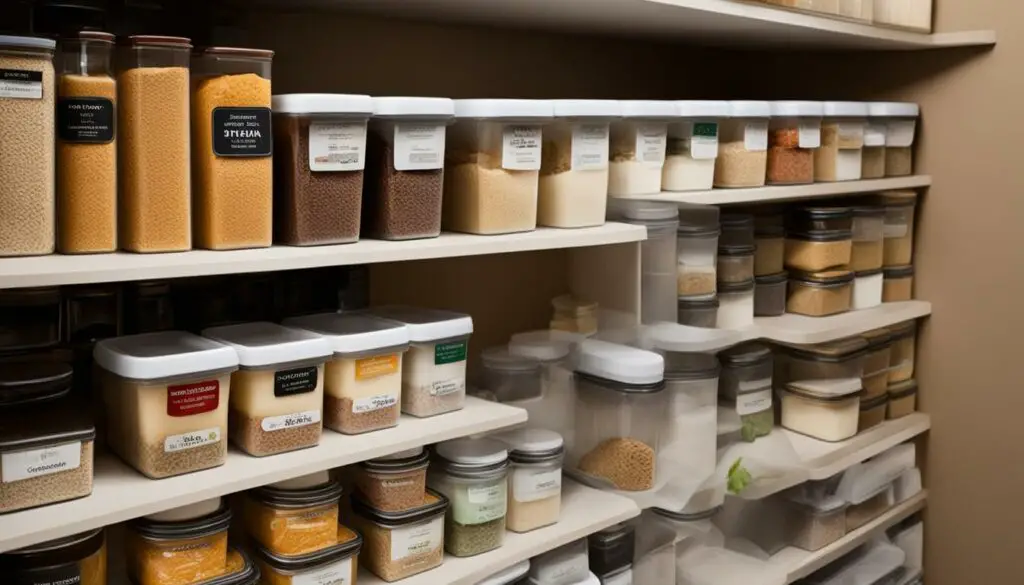
When it comes to finding cream of tartar, you don’t have to look too far. This versatile ingredient, also known as tartaric acid, can be easily found in the baking aisle of most grocery stores. Whether you prefer it in jars, tins, or bags, you’ll likely spot it amongst the other baking essentials.
If you ever find yourself running out of cream of tartar, don’t fret! There’s a simple substitution you can make using another pantry staple – baking powder. Just remember to use 1 ½ teaspoons of baking powder for every teaspoon of cream of tartar called for in the recipe. This handy trick will ensure you can continue baking without missing a beat.
Now that you’ve got your cream of tartar, you’ll want to make sure it stays fresh and potent for future culinary adventures. Proper storage is essential to prevent spoilage and maintain its usefulness. To keep cream of tartar in top condition, store it in a cool, dry place away from moisture and heat. This will help preserve its quality and extend its shelf life.
Remember, cream of tartar is like a secret ingredient that adds that special touch to your recipes, so it’s worth keeping it in optimal condition. A simple tip to keep in mind: if you notice any discoloration or clumping of the cream of tartar, it’s a sign that it may have lost its potency and it’s time to replace it.
The Versatility of Cream of Tartar in Recipes
Cream of tartar is not just a one-trick pony. Its recipe versatility knows no bounds, making it a must-have ingredient in every baker’s pantry. Whether you’re whipping up a cake, baking cookies, or creating delicate pastries, cream of tartar can take your recipes to new heights.
This incredible ingredient adds a tangy zip and enhances the flavors of various recipes. Its acidic properties help balance sweetness and bring out the best in your baked goods. When added to cake batters, it acts as a natural baking powder, resulting in softer and more tender cakes. In cookies, cream of tartar can provide a subtle tang and add crispness.
One of the most remarkable uses of cream of tartar is in recipes that call for whipped egg whites. It stabilizes the egg whites, allowing them to form sturdy peaks that won’t collapse. This means you can create show-stopping meringues, fluffy soufflés, and dreamy angel food cakes with ease.
But cream of tartar doesn’t stop there. It can also be used in other creative ways in the kitchen. When making sugar syrup, adding a pinch of cream of tartar prevents crystallization and ensures a smooth, silky texture. Additionally, it can be used as a substitute for buttermilk in recipes, providing a tangy flavor and helping baked goods rise.
Its unique properties and versatility make cream of tartar a valuable ingredient, not just for professional bakers but also for home cooks. So, the next time you’re in the kitchen, don’t forget to reach for the cream of tartar and elevate your recipes to new levels of deliciousness.
The Many Uses of Cream of Tartar
| Recipe Type | Uses of Cream of Tartar |
|---|---|
| Cakes | Adds softness, enhances flavors, and stabilizes whipped egg whites for tall and fluffy cakes. |
| Cookies | Provides a tangy flavor, adds crispness, and helps cookies spread evenly. |
| Pastries | Aids in producing flaky textures and adds a luscious tang. |
| Sugar Syrup | Prevents crystallization and ensures a smooth texture. |
| Buttermilk Substitute | Adds tanginess and helps baked goods rise. |
Conclusion
Cream of tartar is not just another ingredient in your pantry; it is a recipe transformer that can take your baking to new heights. With its unique chemical properties, cream of tartar allows for precise control over batter rising and creates light and fluffy textures that are sure to impress. But its magic doesn’t stop there.
One of cream of tartar’s secrets lies in its immediate activation upon contact with moisture. This means that your recipes will start working their magic as soon as the batter is mixed. Additionally, cream of tartar acts as a natural deterrent to browning, keeping the inside of your baked goods snow-white and picture-perfect.
From its historical significance in American baking to its versatility in a wide range of recipes, cream of tartar has been a secret weapon for both professional bakers and home cooks. So, don’t be shy to experiment and make cream of tartar your baking companion. Unlock the secrets of successful baking with this incredible ingredient and watch as your recipes are transformed into extraordinary culinary creations.
FAQ
What does cream of tartar do for a recipe?
Cream of tartar is a recipe enhancer that adds tanginess and enhances the flavors of various recipes. It helps control the rising of batter, creates light and fluffy textures, and prevents browning. It also acts as a stabilizer and increases the volume of whipped egg whites.
What are the uses of cream of tartar in recipes?
Cream of tartar can be used in a wide range of recipes, including cakes, cookies, pastries, whipped cream, meringue, sugar syrup, and buttermilk substitutes. It can enhance the texture of caramels and help retain the color of steamed vegetables.
Are there any substitutes for cream of tartar?
Yes, if you run out of cream of tartar, you can use baking powder as a substitute. Use 1 ½ teaspoons of baking powder for every teaspoon of cream of tartar.
What are the effects of cream of tartar in recipes?
Cream of tartar activates immediately upon contact with moisture in a batter, making it an efficient ingredient. It discourages browning, keeping the insides of baked goods light. It also does not leave a metallic aftertaste, ensuring that the flavors of your recipes are not compromised.
What is the role of cream of tartar in baking?
Cream of tartar is a chemical leavener that reacts with a base, such as baking soda, to create a foaming and fizzing effect. It helps control the rising of batter and creates light and fluffy textures in baked goods. It is a key ingredient in baking powder, which is used in many recipes.
Where can I find cream of tartar and how should I store it?
Cream of tartar is readily available in the baking aisle of most grocery stores. It is often sold in jars, tins, or bags. To ensure its freshness, store cream of tartar in a cool, dry place and keep it tightly sealed.

